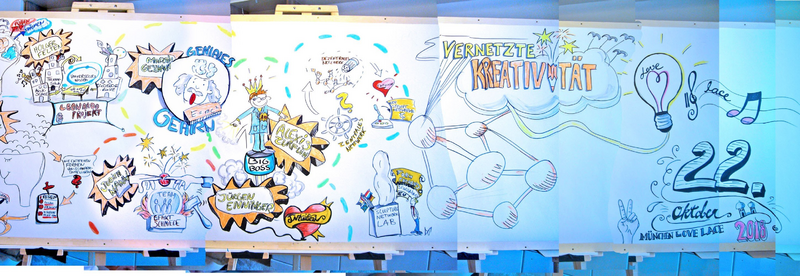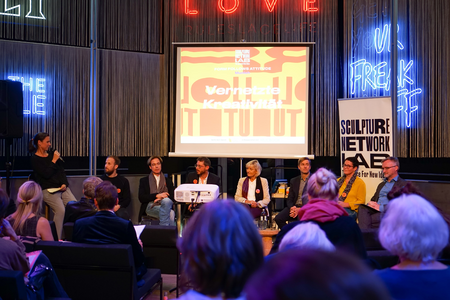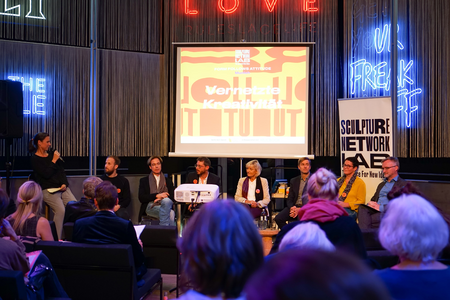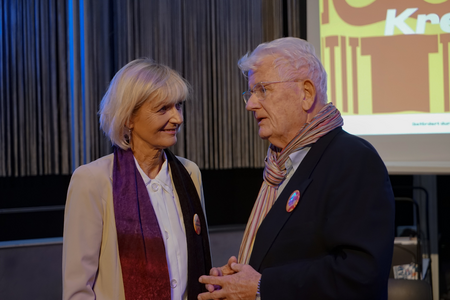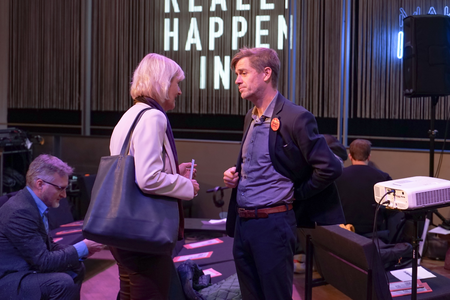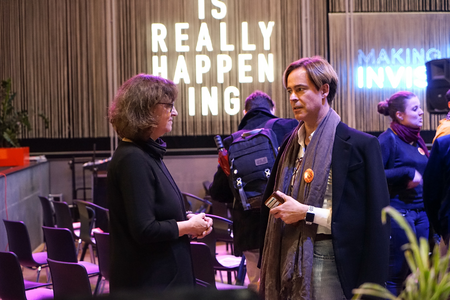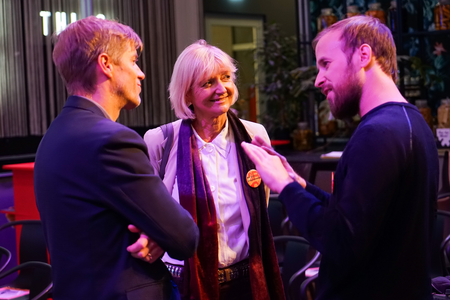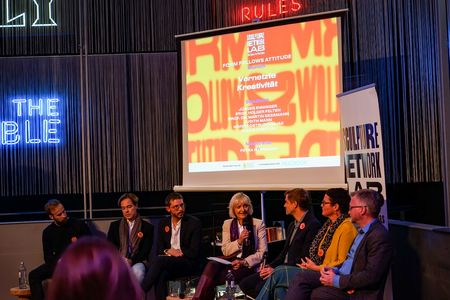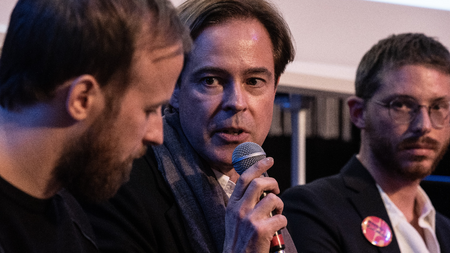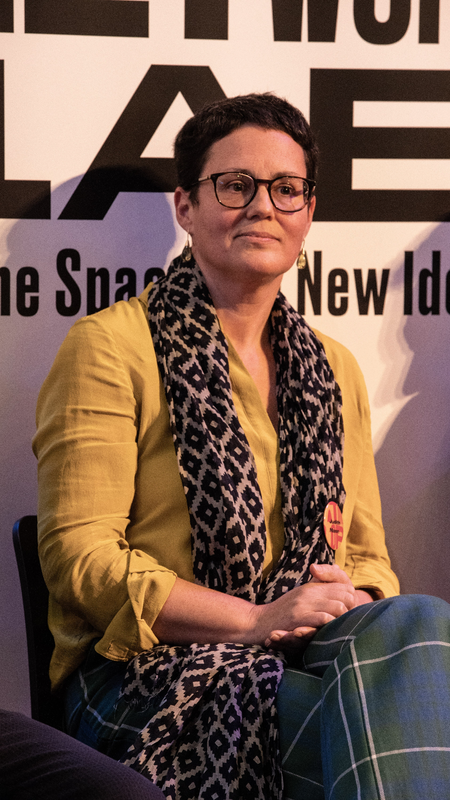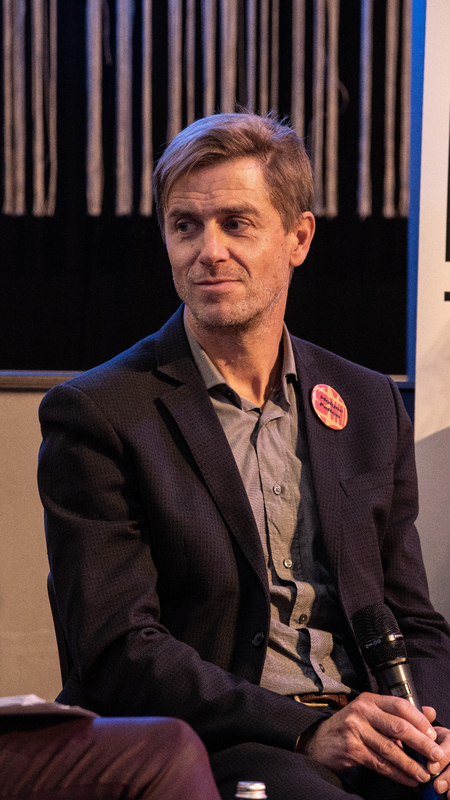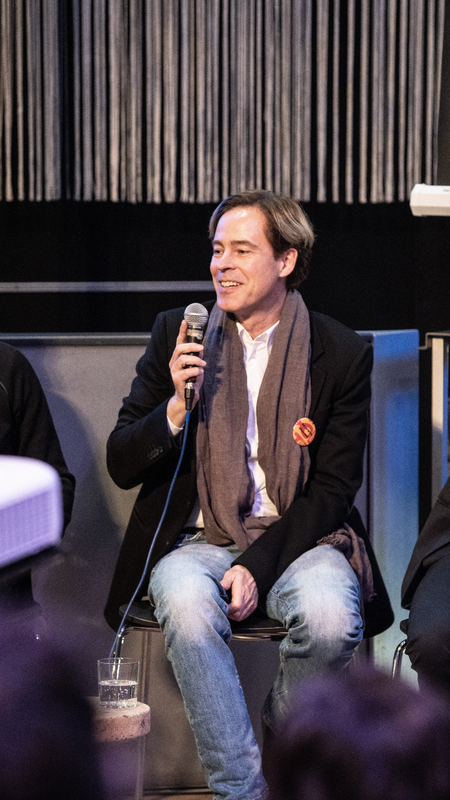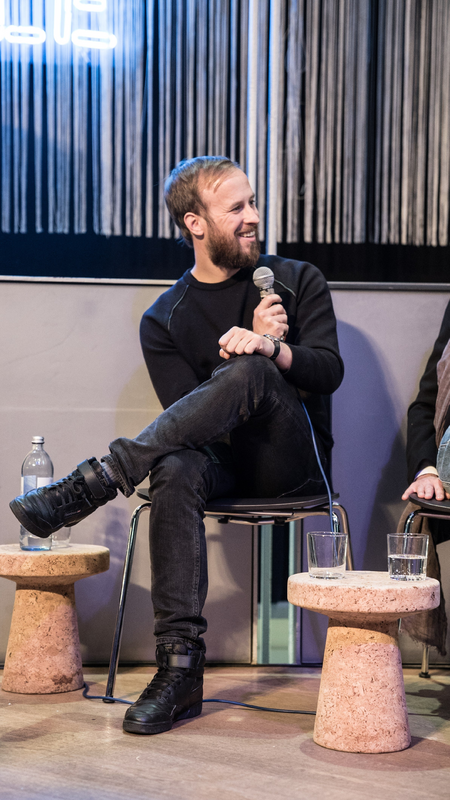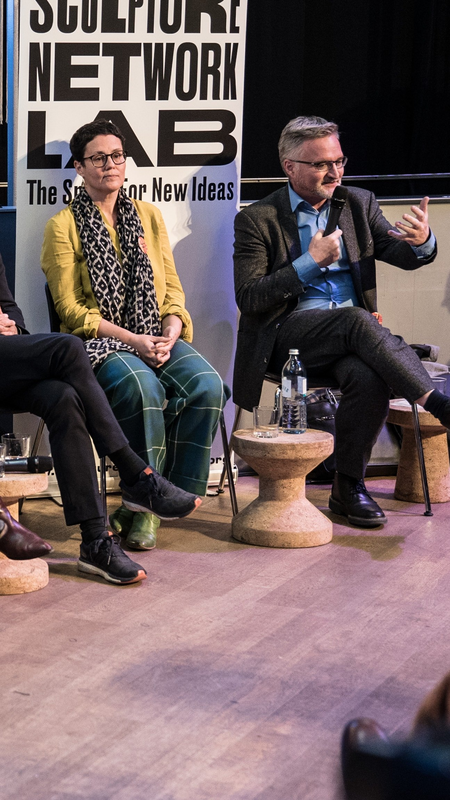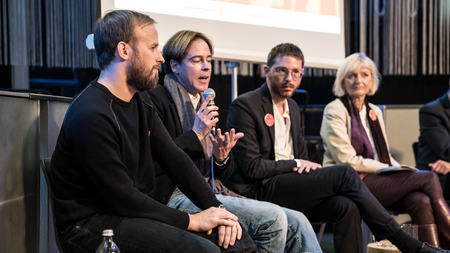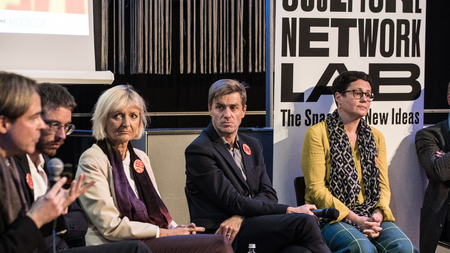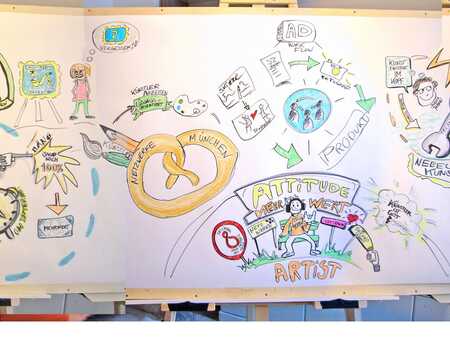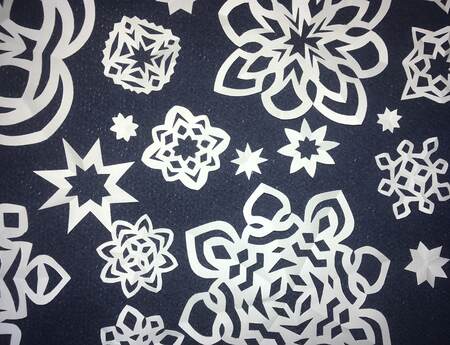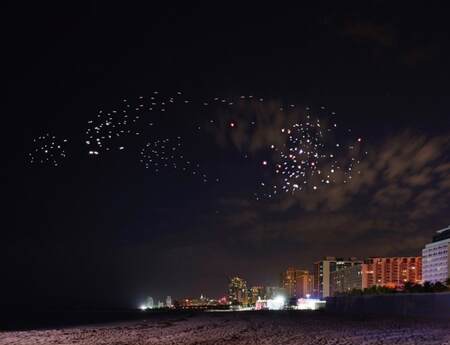Networking Creativity and Creative Networking
After a successful launch in Amsterdam Munich was the second stop for the Sculpture Network Lab event series. At the end of October, in the foyer of the pop-up hotel The Lovelace and in front of over 70 guests, journalist Petra Herrmann mediated a panel discussion with artists, graphic designers, philosophers and cultural managers.
The evening’s main theme was the networking of creative processes and the discussion focused the connections between intuition and inspiration, perfection and improvisation, commissioned art and art as a mission. In other words, topics that touch many creative areas, which is why the Waldemar Bonsels Foundation, too, supported the event.
Everything has been thought, said, drawn, composed and made. Every story has been told. However, the end of an idea is also always its beginning. At the core of many creative processes today there are often complex networks; they can be pragmatic, such as for Jürgen Enninger, who, as Director of the Competence Team Culture and Creative Business of the state capital Munich, wants to support artists in their daily lives in a practical manner, they can be future-orietented such as for Holger Felten, who leads the Leonardo Project in Nuremberg which is a concerted cooperation between the Nuremberg Institute of Technology Georg Simon Ohm and the Hochschule für Musik (music conservatory) and the Academy of Fine Arts, they can be programatic like in the group dynamic choreography of the dancer Moritz Ostruschnjak, or contract and customer oriented as for Alexis Zurflüh, who, as the Art Director, can call upon his pan-European network of photographers, illustrators or graphic designers, or they can be inspiring like the three-dimensional productions of architect and pyro-technician Judith Mann, who wants to captivate and educate audiences with physical phenomenon or, lastly, they can be scientific, as for Martin Gessmann, who views the human memory as an ingenious creative trigger, a dynamic navigation system with flowing memories which are constantly being overwritten and memories that are newly ordered. For Gessmann this system is one of the most decisive impulse providers for creative or artistic processes that there is.
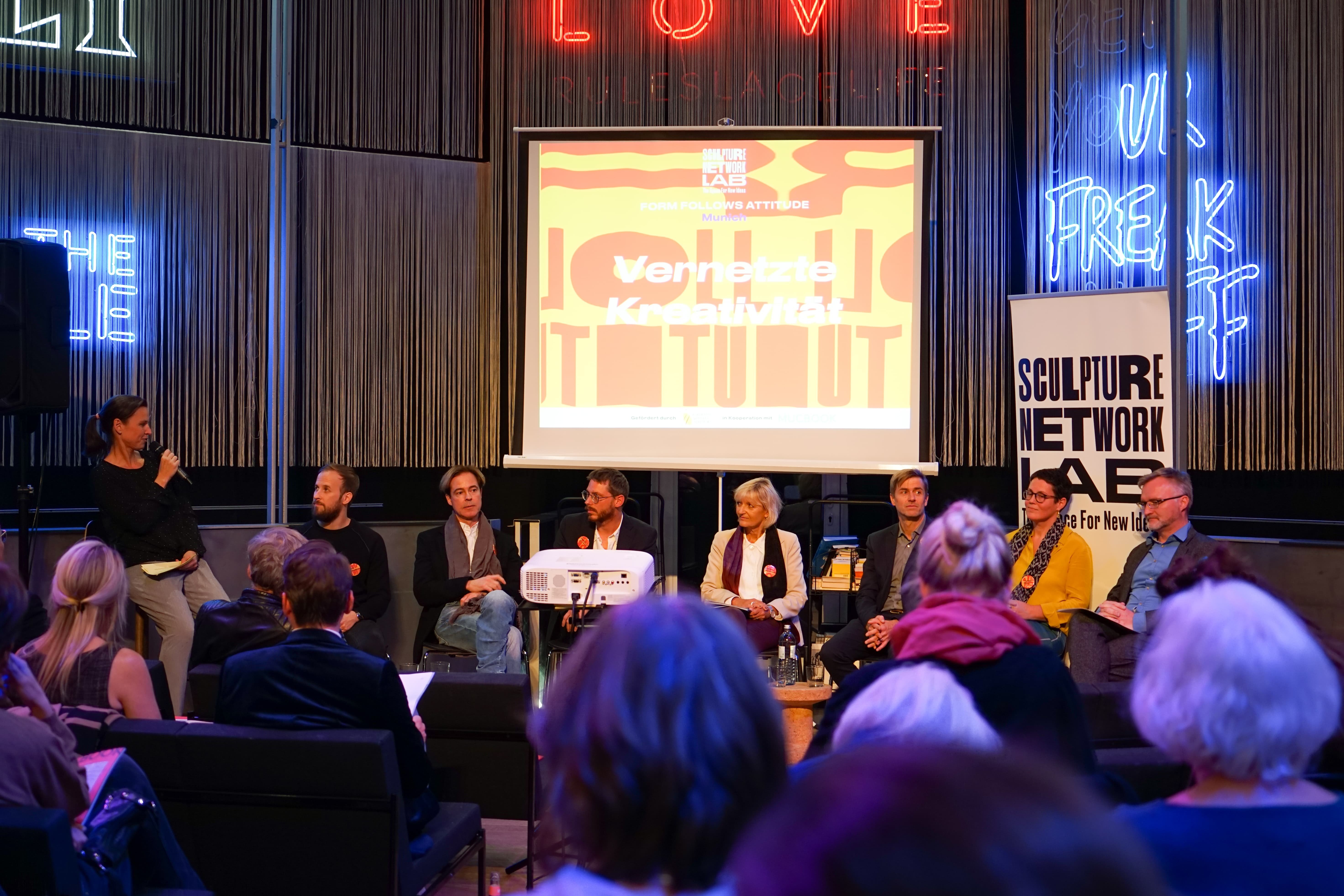
Illuminating Creative Processes
Architect Eva Wolf curated the event. „Reflect on creative processes and view them from different perspectives“, is how she formulated the evening’s topic. In a time in which virtual and physical connections can hardly be grasped clearly, when the flow of information never stops, the ‘streams’ run constantly and the mountains of Big Data continue to grow, information and disinformation can hardly be kept apart. Oftentimes action and reaction cannot be separated adequately. Their interaction can only be grasped with difficulty or not at all. Here we have the creative people, there the customers or the person commissioning the work, here is the sender, there is the recipient, here there is a factual report, there is something politely called „fake-news“ which in reality is simply a lie. Simple correlations have become rare. The complexity of today’s (art) world can hardly be reduced to clear-cut connections and hasty conclusions about „the world out there“ are rather inappropriate. In the future, the group in Munich indicated, the answer to the question what connections have which effect on which phenomenon and processes will be more important than the search for causality. In Munich the discussion was about what network thinking can create and what ‘networked creativity’ is able to achieve. Network thinking means entering into a metaplane, looking calmly at the chaos, accepting it and naming it simultaneously. It also means consciously and actively integrating other people into a (creative) process. And it includes avoiding rash conclusions and judgments in order to give creative processes the space they need.
During the discussion extreme opinions and judgments are not dominant. Instead moderate statements, personal descriptions and subdued evaluations prevail. There was agreement that resilient knowledge will be less and less reliable over a longer period of time.
Developing Future-Oriented Processes
In this case creativity stands for diversity. Creative processes have to do with things that were unknown yesterday. Thus, networks become the center of a future-oriented process. In these networks what counts is an open mind for the unknown, a receptive view without the limitations of blinders that is inspired enough to look beyond the constraints of daily life. Without a network of creativity things will come to a standstill, according to the discussion group. Creativity is meant to break through borders and build bridges where they did not used to exist in networked processes. Artists are not lacking diversity or creativity. However, being networked is something that must be learned and accepted. The faster the world turns around us, the more important it becomes to stop and cultivate new thought patterns and decision-making processes. Networked thought means recognizing the quality of the processes, this according to the findings of the discussion group. Decisions need time. Seemingly irrational ideas need space. Everything is always connected to everything else. Only then can creative solutions develop their results. With a network creativity can appear from nothing with an ‘aha’ effect. Suddenly there are new solutions, a new point of view or an unusual level of understanding reveals a new big picture. Networking sounds good and brings a great deal. The artist is responsible for taking advantage of this opportunity.
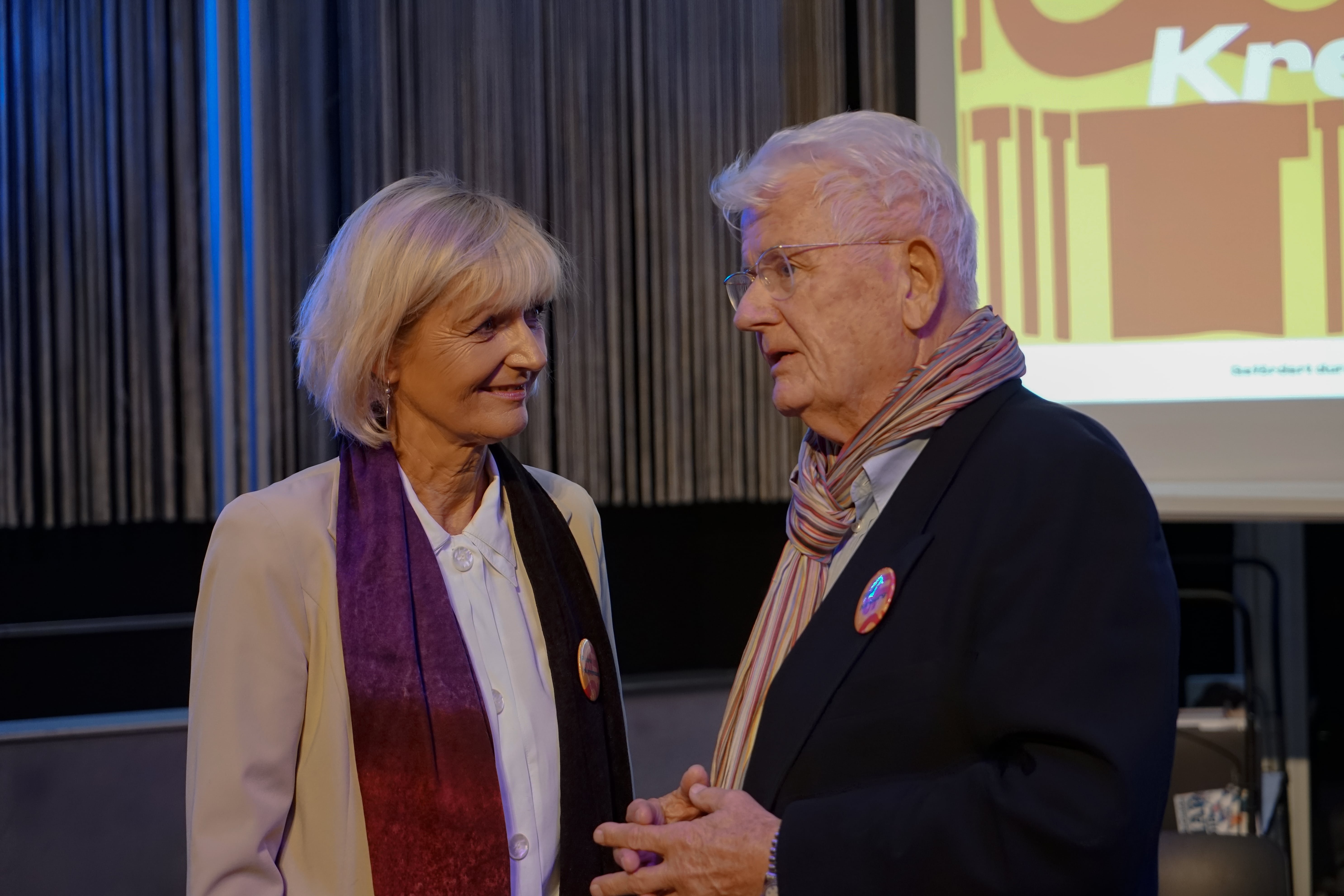
Form Follows Attitude
The panel discussion Networking Creativity in Munich was part of the Sculpture Network Lab event series. The series, entitled Form follows attitude, concentrates on the attitude behind the form and aspires to help us perceive the world more clearly and perhaps to make it a better place. The sculpture network Lab presents ideas, examines their social-political relevancy and points out social connections; active, courageous, innovative – networked, creative and unconventional.
The event was sponsored by
Author: Willy Hafner
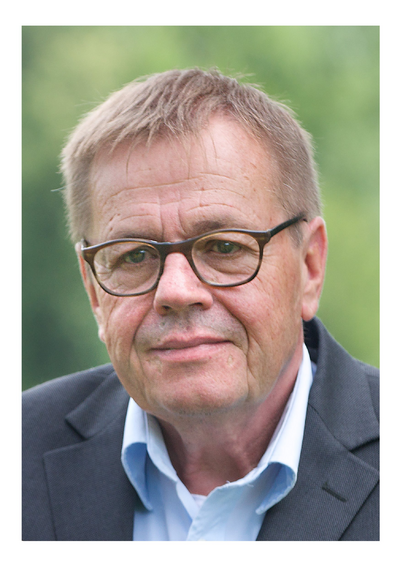
Willy Hafner is a Munich art historian and organized the first and second Sculpture Network Lab together with Eva Wolf and Angelika Hein.

